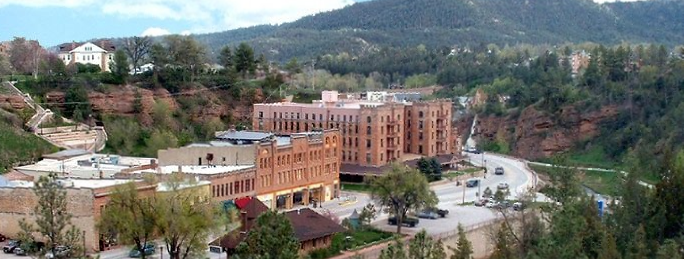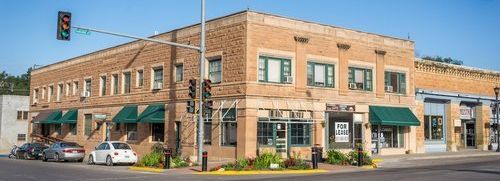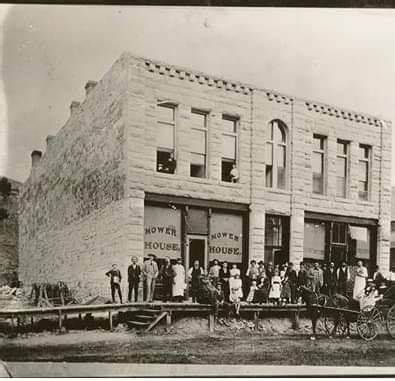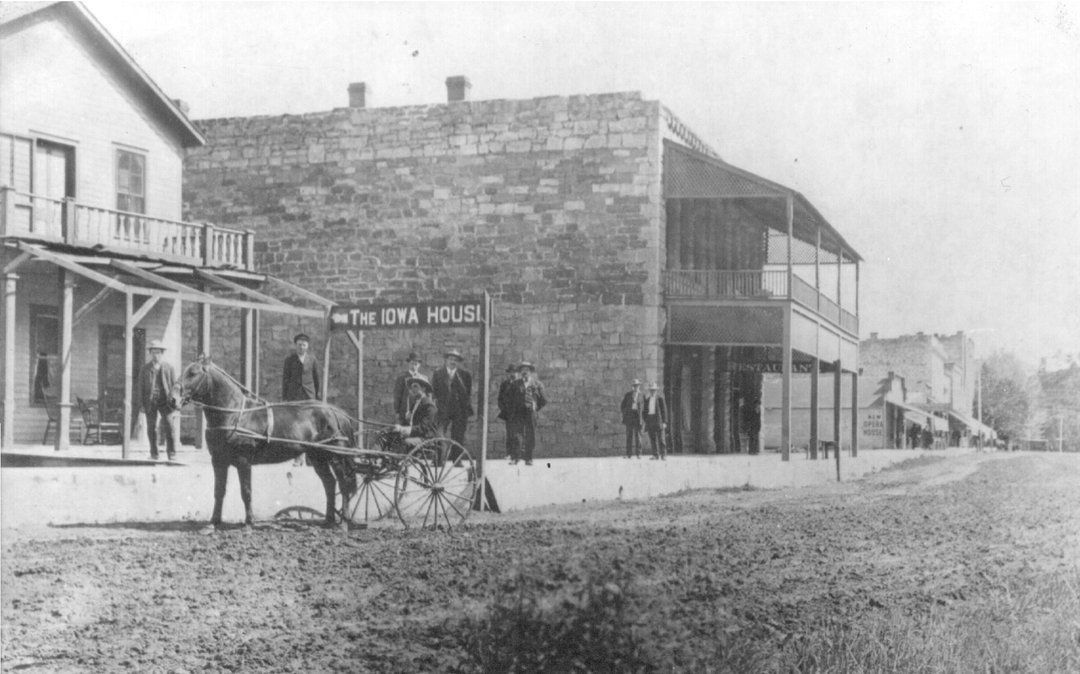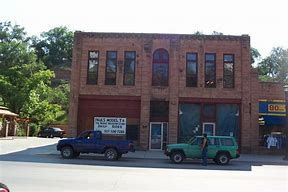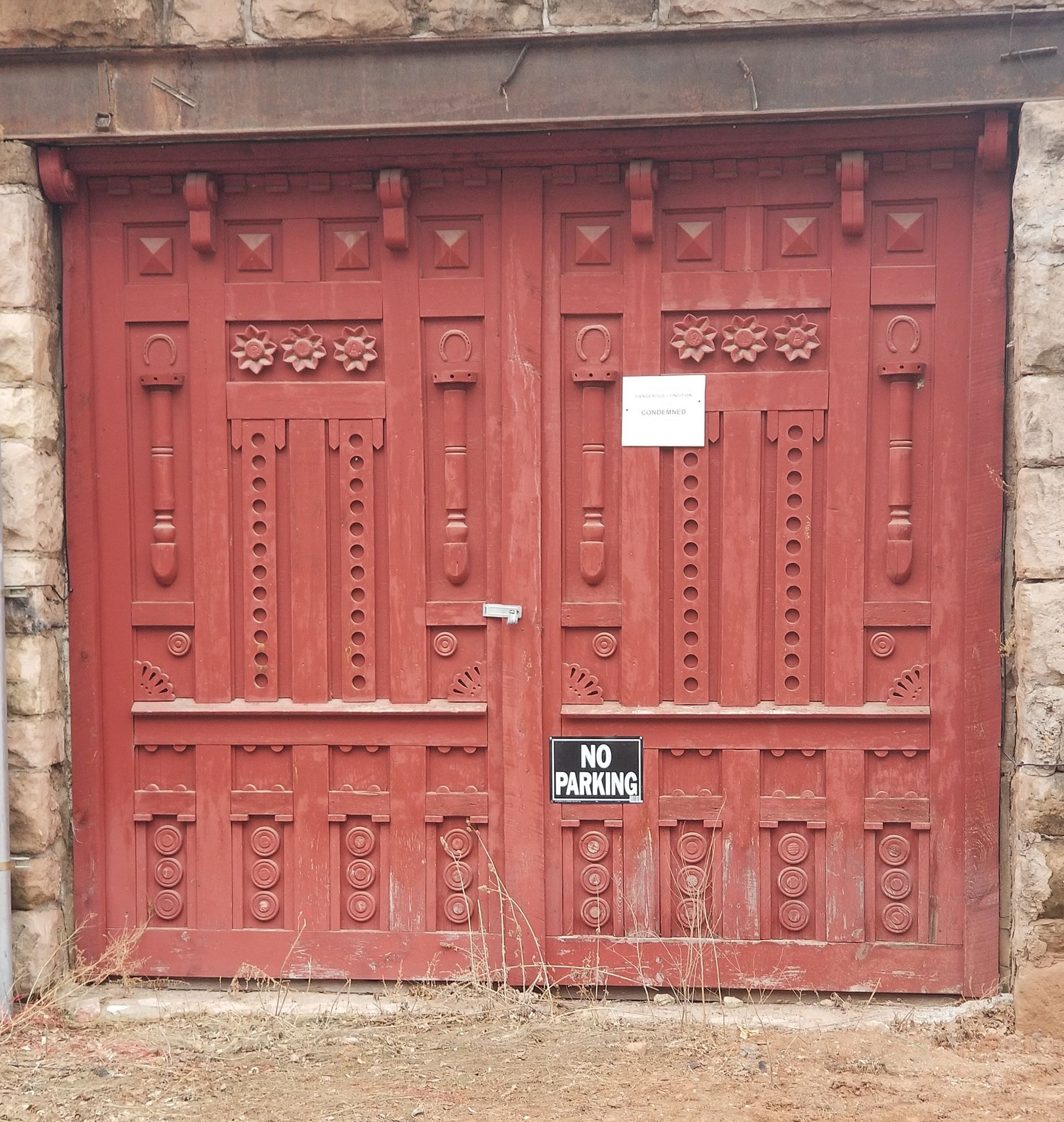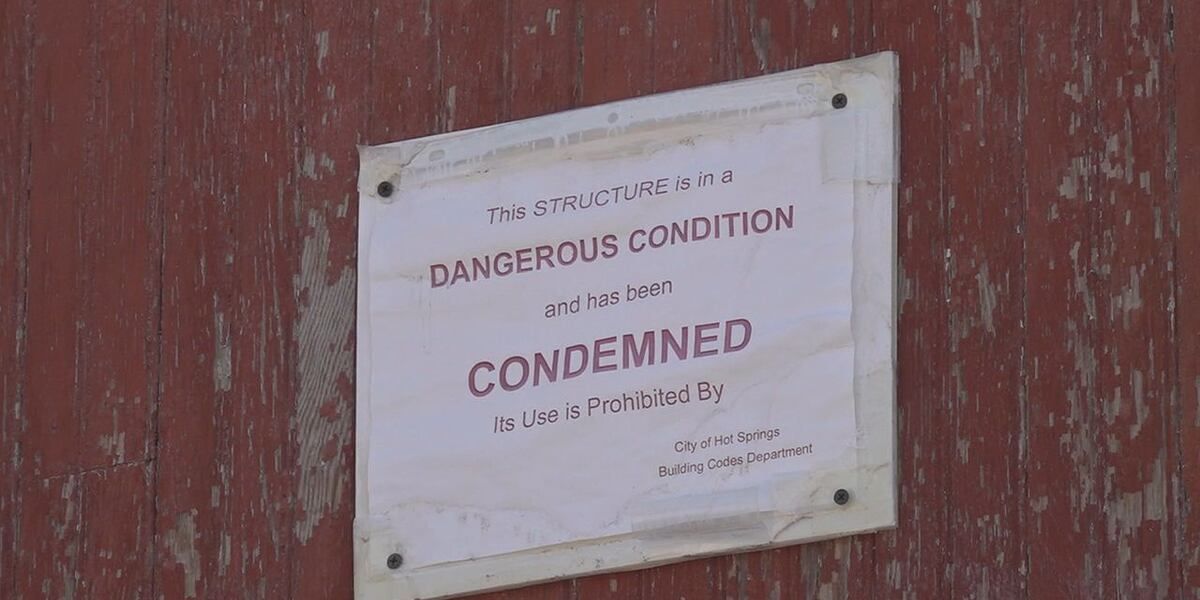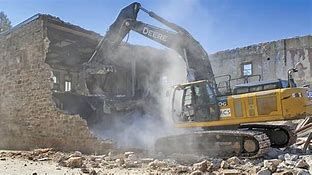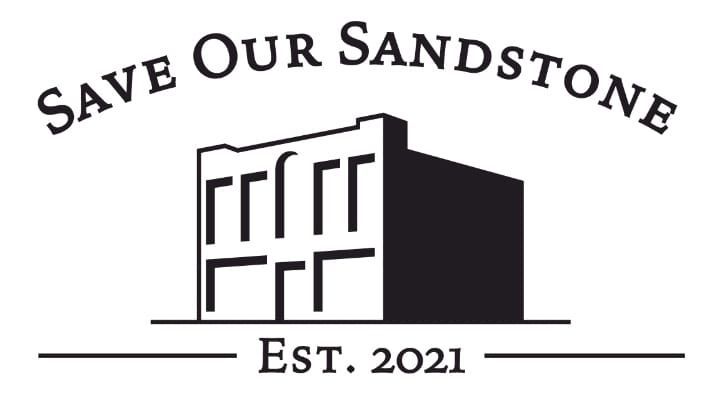Wesch-Oak aka Mower House
🧱 Wesch-Oak aka Mower House
Address: 717 North River Street, Hot Springs, SD 57747
Built: 1893
First Occupant:
Henry Shultz (Boarding House / Beer Saloon)
Current Occupant:
Demolished June 9, 2021
Architect:
Unknown
Contractor:
Phillip Wesch and John Oak
Sandstone Quarry:
Unknown
Architectural Style:
Two-story sandstone commercial with rubble rock sidewalls, a tool-faced Romanesque façade, stone pilasters framing the central entrance, and a symmetrical design with a second-floor arched window and denticulated cornice. The rear featured ornate brackets supporting balconies, and a hand-carved spread eagle once adorned the front.
📜 Historical Overview
The Wesch-Oak Building was constructed in 1893 by contractors Phillip Wesch and John Oak. Its first tenant, Henry Shultz, opened a beer saloon in July that year, only to sell it a month later to Ben Skiles. Over the next two years, ownership shifted, with Skiles briefly operating a gambling hall before selling to Henry Marty and Al Dearduff in early 1895.
One of the building’s most striking features — a hand-carved stone spread eagle — arrived from the quarry in December 1893, the work of Victor Sauer of Cheyenne River. The building served as a boarding house, saloon, and later the Union Hotel, with Miss Nora Wheeler managing rooms and Mrs. Carrie Gode overseeing dining when it opened under the new name in April 1908.
By 1910, a raised boardwalk allowed carriages to unload passengers directly into the building. In 1912, W. J. Kellogg took over operations, and later that year, Hot Springs Motor acquired the property, leaving no vacant buildings along River Street. By 1919, the building was recognized as one of the city’s oldest sandstone structures, with an intact storefront, boarding rooms upstairs, a downstairs dining room, parlor, and a main-floor shop.
The Wesch-Oak also became known as the Mower House in later years. In 1996, after a decade of debate and a city condemnation order, a grassroots effort — the rebirth of Save Our Sandstones (SOS) — saved the building from demolition. Volunteers cleared debris in 1997, and in 2001, SOS sold the building to Paul Amundson, who began restoration work.
Despite this history, structural concerns and a second condemnation in January 2020 sealed its fate. On June 9, 2021, the Wesch-Oak Building was demolished, marking the loss of a prominent and historic gateway to downtown Hot Springs.
📍 Modern Era
Where the Wesch-Oak once stood at the corner of River Street, an empty space now remains — a stark reminder of the fragility of Hot Springs’ sandstone heritage and a rallying point for preservation efforts.
🔍 Research Notes & Requests
Save Our Sandstone is still seeking:
- Photographs of the carved spread eagle in place on the façade
- Records or photographs of the Union Hotel interior
- Images of the 1996–97 restoration effort
QR Code Info: This sandstone was built by Philip Wesch and John Oak. The earliest mention of a business occupying space was a beer saloon. The Mower House operation was mentioned in 1894. The Union Hotel opened on April 3, 1908. It also served as a machine shop for the Hot Springs Motor Company, right next door, who was the Ford dealer. They purchased the building on May 29, 1919. The building changed hands many times and never quite got the rebuilding necessary to stay standing. It was condemned twice and demolished June 9, 2021.
